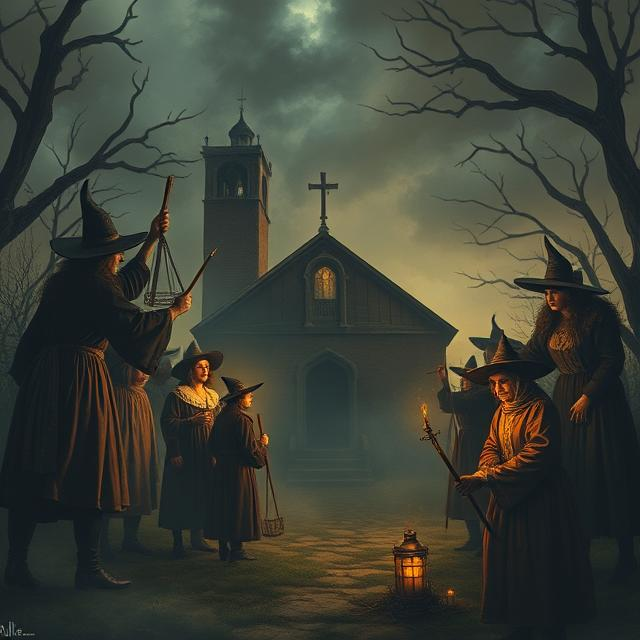Your cart is currently empty!
The Salem Witch Trials: A Tragic Chapter in Colonial America

The Salem Witch Trials were a series of witchcraft accusations and trials that took place in 1692 in Salem Village (present-day Danvers, Massachusetts), a part of colonial New England. The trials resulted in the execution of 20 people, mostly women, and the imprisonment of many others. The event has since become a symbol of mass hysteria, injustice, and the dangers of scapegoating.
The Spark of the Trials
- In January 1692, a group of young girls in Salem Village, including Betty Parris and Abigail Williams, began exhibiting strange behaviors, such as fits, convulsions, and outbursts.
- They claimed to be possessed by spirits and accused several women in the village of witchcraft.
- The accusations were amplified by local fears of witchcraft and the Puritan belief in the devil’s influence.
The Witch Hunt Intensifies
- The girls’ accusations sparked a witch hunt that spread rapidly. Tituba, an enslaved woman from the Caribbean, was the first to be accused and confessed, implicating others in the community.
- Religious leaders, local magistrates, and judges believed the accusations and began conducting trials in which the accused were often forced to confess under duress or threats.
- Spectral evidence, in which the accusers claimed to see the spirits or specters of the accused, was used as proof of witchcraft, despite its lack of physical evidence.
Key Figures and Trials
- Judge Samuel Sewall and Judge John Hathorne presided over the trials, while Reverend Cotton Mather, a prominent minister, supported the trials, although he later expressed regret.
- Many people, including prominent members of the community, were accused, and some confessed to save themselves, while others maintained their innocence and were executed.
- Sarah Good, Sarah Osborne, and Rebecca Nurse were among the first victims, with Nurse’s execution being particularly controversial, as she was highly respected in the community.
The End of the Trials
- By the fall of 1692, the trials began to lose credibility. Public outcry grew as the accusations became more widespread and nonsensical.
- Governor William Phips intervened in October, halting the trials and later declaring that spectral evidence would no longer be accepted in court.
- In 1693, the remaining trials were dismissed, and the judges expressed regret for their roles in the executions.
Aftermath and Legacy
- The Salem Witch Trials were a tragic example of fear and superstition, resulting in the deaths of 20 people, mostly women, and the ruin of many lives.
- The trials also led to the disbanding of the court that had conducted the trials and the establishment of a more rational legal process.
- Over time, the event became a symbol of the dangers of mass hysteria, injustice, and the abuse of power in the pursuit of social control.
Conclusion
The Salem Witch Trials remain a sobering reminder of the consequences of irrational fear, scapegoating, and the breakdown of justice. They are often referenced in discussions of human rights, the dangers of mob mentality, and the importance of due process in legal systems.